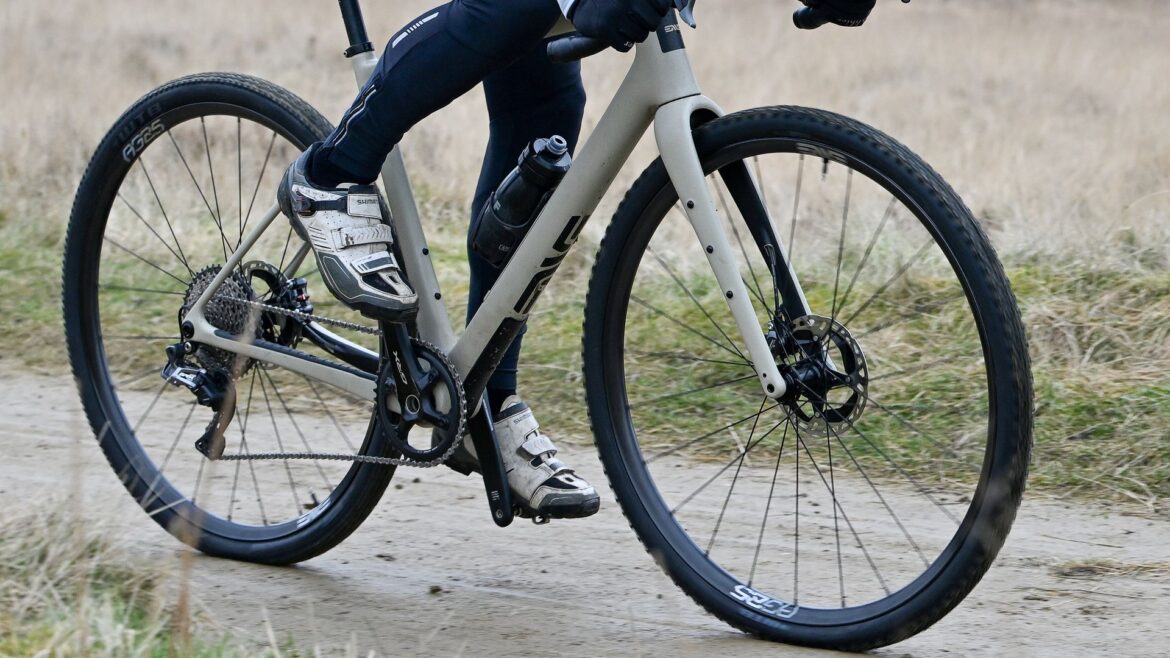As with most things in life, you can’t have it all when it comes to tyres. We’d all love to ride gravel tyres that offer great grip in all conditions, excellent comfort, low rolling resistance, high puncture resistance, and, of course, a reasonable price. Whilst this isn’t entirely realistic, one helpful hack is to run different tyres front and rear.
This allows you to have lower rolling resistance at the back, where it’s most beneficial, without compromising front-end grip too much. The combination of WTB’s Riddler and Raddler tyres offers exactly this, hopefully allowing plenty of traction in the corners without having big, squidgy knobs robbing you of power when you press on the pedals.
Smoother hardpack trails are the ideal surface for the Riddler and Raddler
(Image credit: Andy Jones)
This pairing was fitted to an ENVE MOG gravel bike that I had the pleasure of riding recently, paired with an ENVE AG25 wheelset, and I spent plenty of time on the tracks and trails of the Peak District. However, as the recent weather has been exceptionally dry, I must confess that mud has not been a significant feature of any of those test rides.
Construction
The tubeless-ready 700c Riddler is available in 37mm and 45mm widths, whilst the Raddler is either 40mm or 44mm. Both tyres are offered in 120tpi Dual DNA SG2 or 60tpi Dual DNA, where the SG2 denotes added puncture resistance for an extra £10. I tested the widest SG2 versions.
The two treads are quite similar, with smaller, closely packed knobs in the centre and wider, more open lugs on the shoulders, and some intermediate-sized tread in between. The Riddler’s centre line is more closely packed and the knobs are shorter than those on the Raddler, as you’d expect on what is billed as the faster tyre.
Both tyres benefit from WTB’s Dual DNA technology, which places a harder-wearing, faster-rolling compound along the centre with a softer, tackier rubber on the shoulders of the tyre to help it grip when leant over in a corner.
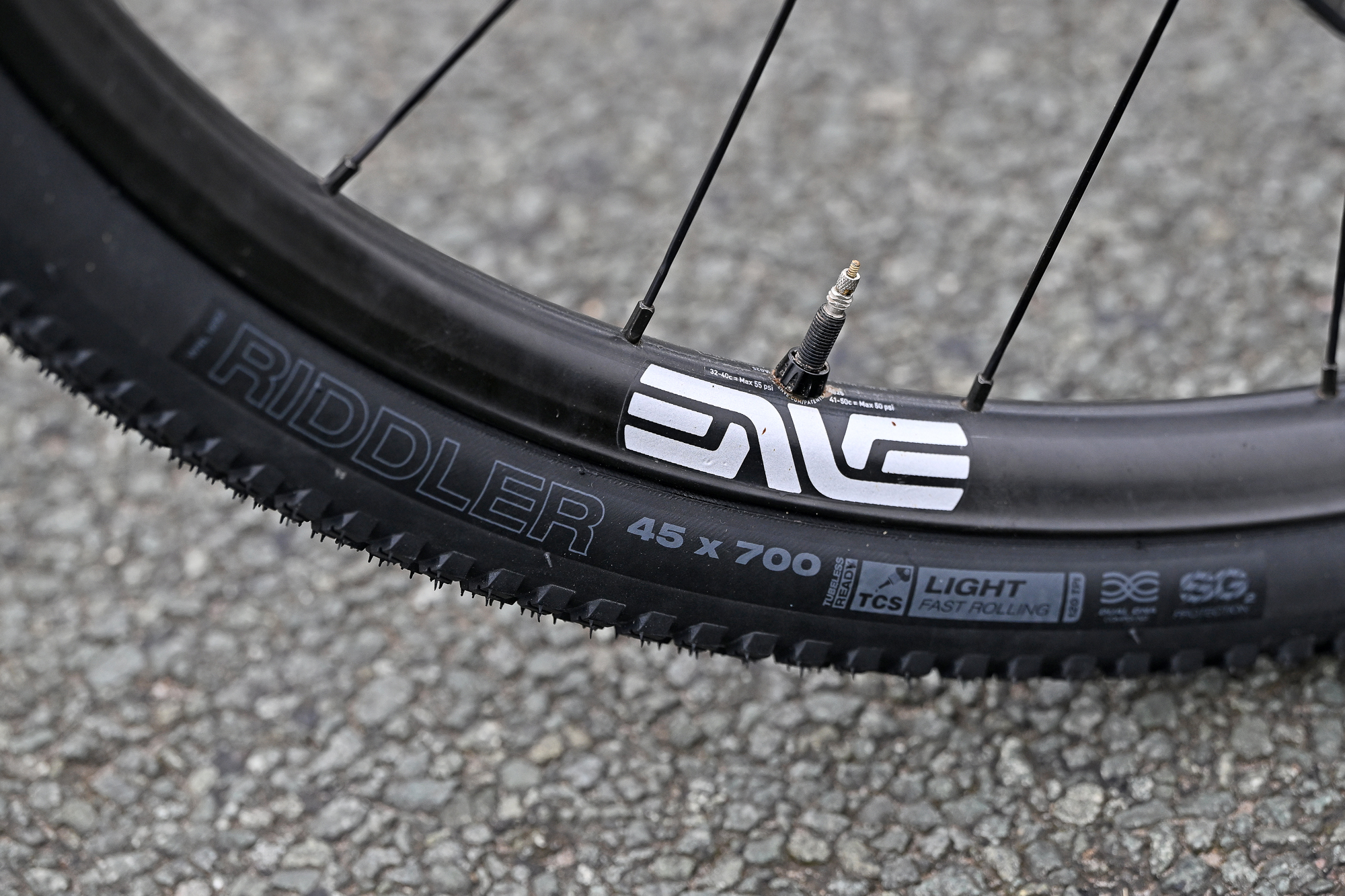
Full details on the side of the Riddler
(Image credit: Andy Jones)
The SG2 puncture protection is a bead-to-bead layer underneath the tread that should prevent most things from penetrating the tyre, and, combined with the supple 120tpi casing, shouldn’t impact rolling resistance or road feel too much.
Claimed weight for the Riddler in this size is 541g and 547 for the Raddler. For what it’s worth, the used, sealant-encrusted test tyres weighed 590g and 572g respectively
The ride
Visually, both tyres appear much squarer than many gravel tyres, although I think that is in the main down to the tall side knobs which extend up almost to the level of the centreline rather than the shape of the carcass itself.
Fitted to the ENVE AG25 wheels, which have a 25mm internal width, the 45mm Riddler measured up at just over the stated width, whilst the Raddler came up a bit short of its billed 44mm, but not enough to be significant.
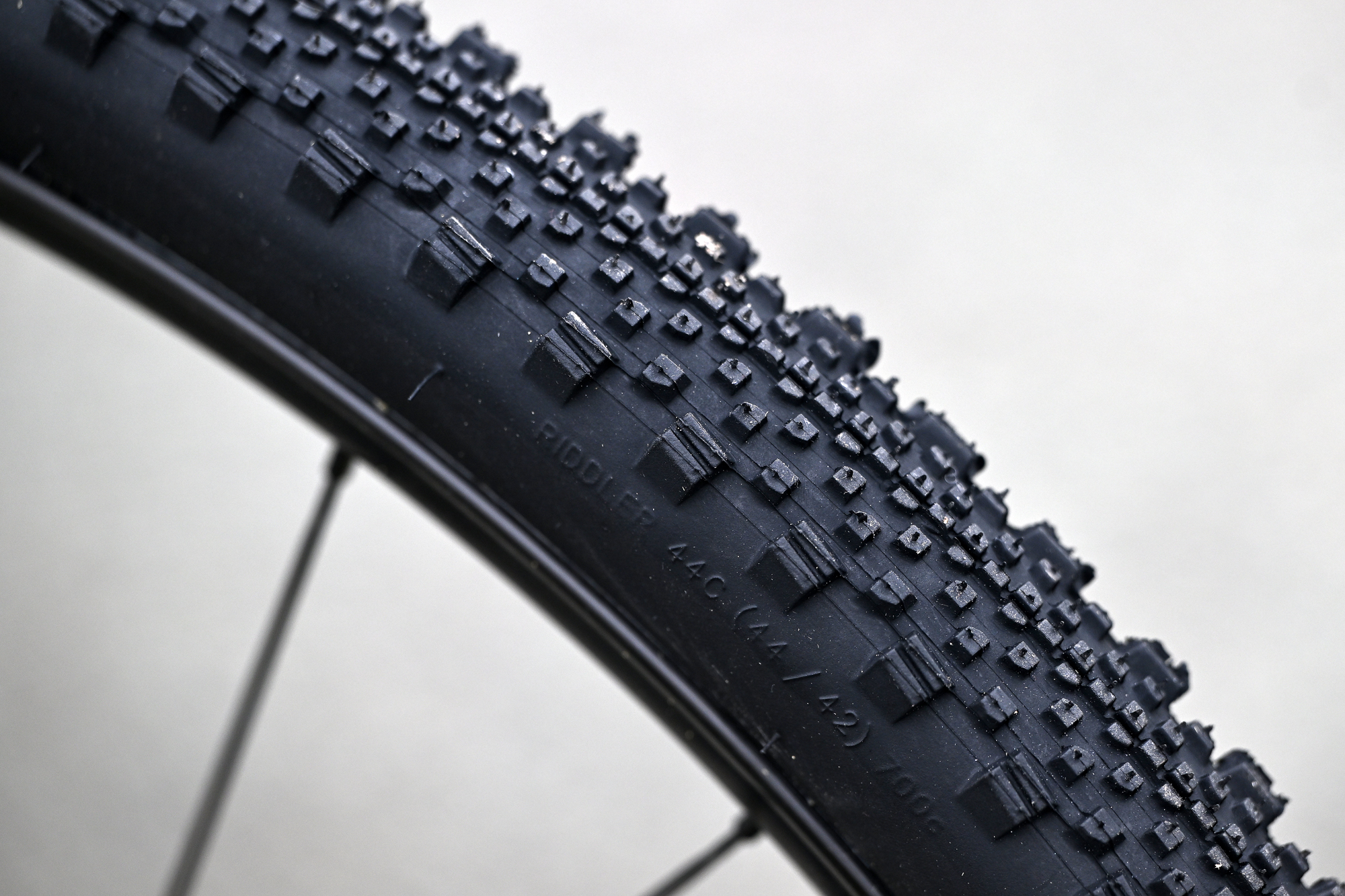
More aggressive Raddler tyre used on the front (despite what the small text on the tyre says)
(Image credit: Andy Jones)

Smoother Riddler tyre used on the rear
(Image credit: Andy Jones)
I can’t comment on ease of tubeless set-up, as the bike arrived ready to ride, but air retention has been excellent, with only occasional top-ups required. This is perhaps as you’d hope, given that the tyres were mounted using Silca’s excellent Ultimate Tyre Sealant.
My typical gravel rides are about 50% standard disused railways/smoothish trails and 50% quite gnarly rock and rubbly tracks, depending on which way I head out of the door. Either way, they are usually pretty well drained and grippy thanks to the high-friction gritstone, even more so recently with the very dry weather. Thus, the lightly treaded Riddler had no issues with grip or traction and neither did the slightly more aggressive Raddler. However, looking at how closely packed the lugs are, I don’t think that it is a great leap of faith to conclude that neither tyre will fare particularly well in sticky mud!
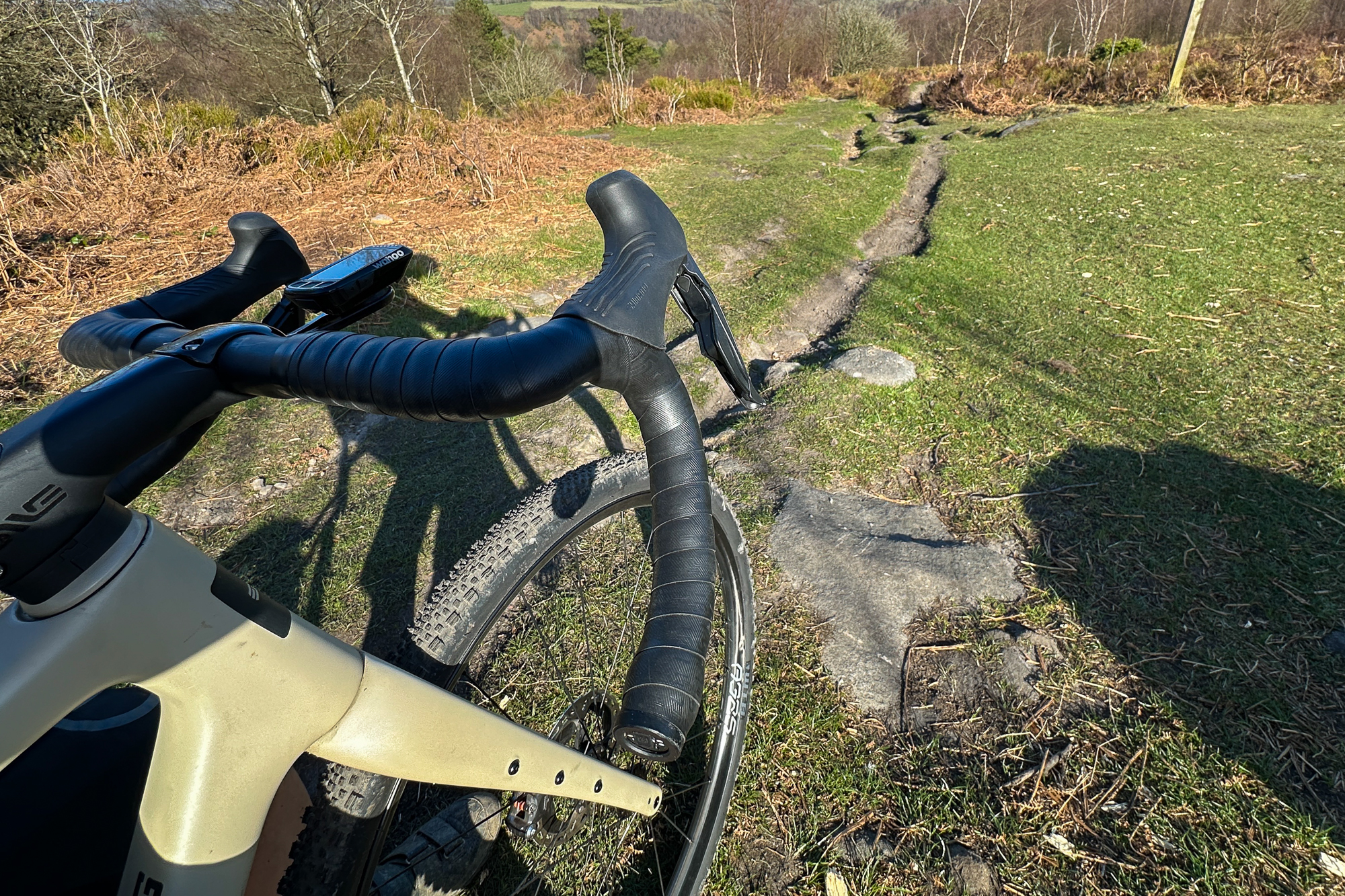
MOG and Raddler set to take on a singletrack trail
(Image credit: Tim Russon)
With the dry, dusty conditions, it didn’t take too much enthusiasm on the brakes to lock the back wheel – the shallow tread is happy to skip across the surface fairly early on, so a bit of modulation went a long way in controlling things, but it was always nice and predictable so never caused any issues.
The slightly more heavily treaded Raddler offered more grip on the rock-hard trails of late, with no unpredictable moments when turning, thankfully.
On the inevitable tarmac sections that are part and parcel of UK gravel riding, the Riddler ensure that no power was lost thanks to the very short knobs, so asphalt kilometres zipped by rather than feeling tedious and draggy.
Durability looks to be reasonable so far, with no visible damage to the sidewalls despite some very rocky rides, although I don’t envisage that it will take too many miles to reduce the Riddler to a virtual slick.
Value and conclusion
On that note, whilst the combination of Riddler and Raddler makes sense if you are looking for maximum speed and efficiency, I’d err towards fitting two Raddlers instead from a value point of view. As tested, the Riddler and Raddler cost the same at £70 each, which is towards the upper end gravel tyre prices, and it is inevitable that the smaller and shorter the knobs, the less potential use you are going to get out of a tyre.
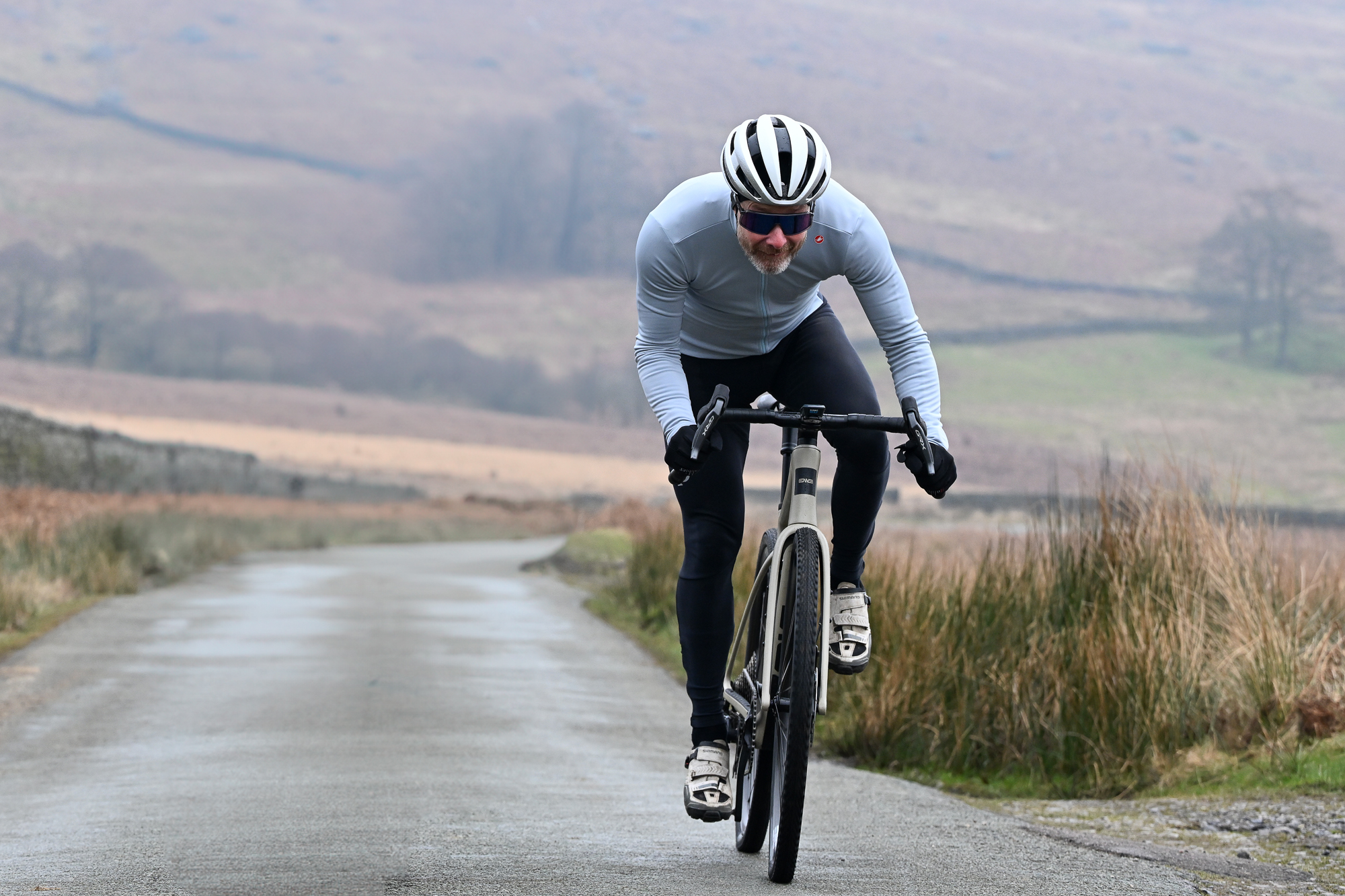
Riddler on the rear ensured that there was no draggy feel on tarmac
(Image credit: Andy Jones)
Given that the two weights are very similar, and tread pattern likewise, a Raddler on the rear would turn into a Riddler effectively once it wore down anyway, but give you more miles per pound spent.
That aside, the Riddler and Raddler both make very reasonable fit-and-forget gravel tyres for drier, hardpack conditions.
